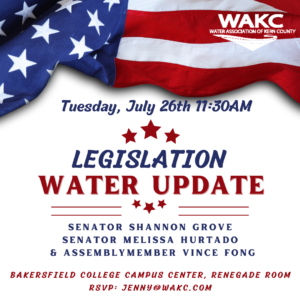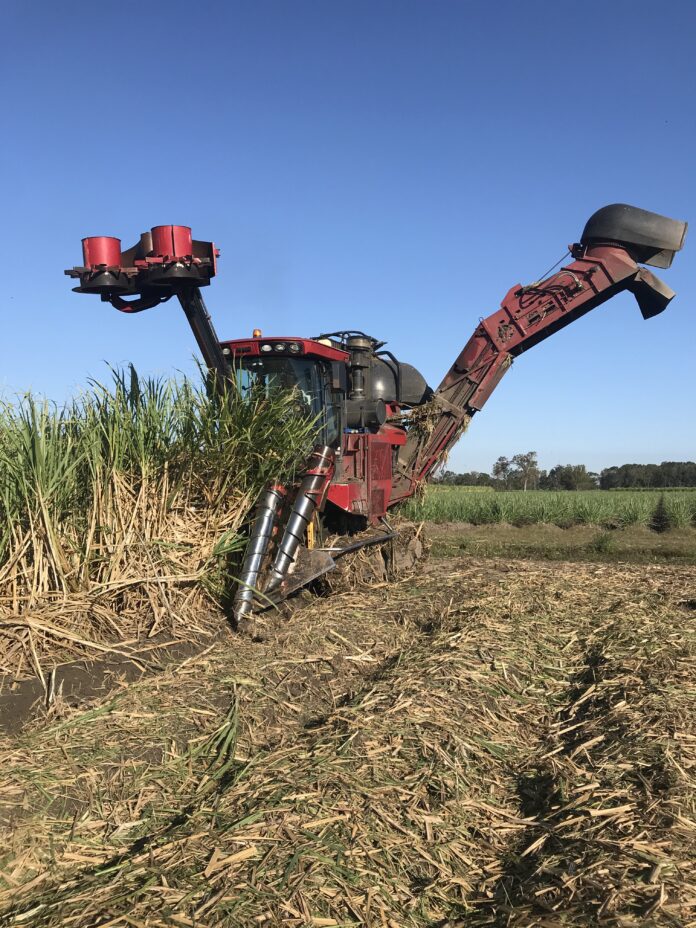The Semitropic Water Storage District board of directors held its Wednesday, July 13, 2022 meeting at its Wasco headquarters for staff, consultants and board members. Everyone else got to enjoy the meeting online with GoTo, Zoom’s cheaper cousin. The meeting was scheduled to start at 12:30pm and General Manager Jason Gianquinto told the board there wasn’t a quorum yet but enough folks showed up in person and online to make it a go.
The Meeting
Chairman Dan Waterhouse called the meeting to order at 12:31pm and we all saluted the flag together. He asked the consultants to introduce themselves and there was no public comment.
Attorney Steve Torigiani explained about the online meeting permission required by executive order. The board was fine with this and the agenda was approved, as were the minutes. The May and June treasurer’s report was approved. Controller Bobby Salinas gave his financial reports saying things were OK for now and the board agreed. There was then a long moment of silence as the board reviewed the accounts payable. Farmers, what are you going to do?
District Engineer Isla Medina reported the sale of the district’s well drilling rig and related material. Best Drilling & Pump of Southern California came in with the high bid, I think $750,000. Medina said the rig cost more than $1 million new and drilled more than 60-wells. Those wells were worth more than $6 million so they got their money’s worth. The board approve the sale. Director Jon Reiter asked if other districts had the opportunity to submit bids. The answer was yes.
Next Medina reported DWR has millions of dollars more in Prop One grant money. She said GEI Engineering would like to prepare the grant application under Task Order. I didn’t catch the amount. Medina also told the board GEI wants $50,000 to deal with High on Speed Rail. That money will be reimbursed to the district by HSR.
Gianquinto reported Mid Valley Farms has submitted a letter to request the ability to move their water supply more evenly through the district. The company lost acreage to HSR and the board agreed. The turnouts, canals and operations won’t be disturbed.
Consultant Reports
Rick Amme with W.M. Lyles said his report will be short. Lyles is running a water treatment system and he explained the change in how chemicals can be used differently to keep corrosion at a minimum. He also reported they had to accept a large shipment of 27” pipe. It came early but they had to take it when they could before the supply chain messed things up. And he did keep his report short. Good for him.
Larry Rodriguez, GEI told the board there is a written report. I couldn’t hear him very well but he did make a report on many topics.
The consultant reports were interrupted due to a scheduled hearing on an important topic. This is the first time I’ve covered this type of change.
Election Hearing
At 1:00pm a public hearing was held to determine if the district should consider an alternative election roll. Torigiani explained the April 23rd meeting was when an engineer’s report said an alternative roll based on water delivered was a valid option. This report was on file at the SWSD office for public review. Torigiani asked to enter this report and public notice from The Bakersfield Californian newspaper as exhibits to the hearing.
Gianquinto told the board the one vote per $100 of water purchases has been the standard. Over the years conditions have changed and now the more than 4,000 parcels within the district would be the guide to determine who is eligible to vote. The proposal is one vote per $1 of water benefit services per acre. If I understood correctly.
There was no public testimony. No one spoke up about changing how votes are counted. Torigiani said that makes it time for the board to vote. If the resolution passes the matter will be sent to the Kern County Board of Supervisors to give its stamp of approval. The board was unanimous in supporting the new voting rolls. That ended that hearing at 1:10pm.
SGMA
Waterhouse said the meeting will go to a Semitropic Groundwater Sustainability Agency report. Rodriguez reported the Groundwater Sustainability Plan rewrite is almost ready. Gianquinto said the last meeting was when the GSP was dissected and each portion was gone through. He said DWR had some comments the GSA used as a guide to rewrite. He gave an overview on the changes saying clearer definitions on management areas, exceedance and other matters that needed not only a common measurement but a common action trigger. Existing maps and tables where in good shape to use for further planning of actions to show where the management areas are located. Subsidence has not been a problem for Semitropic but DWR wanted more info in the GSP section on subsidence. This tied in with how to manage subsidence on a basin-wide manner. The targets there are protecting the Friant Kern Canal and the California Aqueduct in the Kern Subbasin. When meeting with DWR the Kern Groundwater Authority GSA, which Semitropic is a member of, said the issue of petroleum extraction makes things unique in the subbasin. Semitropic’s rewritten portion will be turned into the KGA at the end of the week.
overview on the changes saying clearer definitions on management areas, exceedance and other matters that needed not only a common measurement but a common action trigger. Existing maps and tables where in good shape to use for further planning of actions to show where the management areas are located. Subsidence has not been a problem for Semitropic but DWR wanted more info in the GSP section on subsidence. This tied in with how to manage subsidence on a basin-wide manner. The targets there are protecting the Friant Kern Canal and the California Aqueduct in the Kern Subbasin. When meeting with DWR the Kern Groundwater Authority GSA, which Semitropic is a member of, said the issue of petroleum extraction makes things unique in the subbasin. Semitropic’s rewritten portion will be turned into the KGA at the end of the week.
Waterhouse said DWR has said it will respond to the rewrites within six-months. He said while he believes DWR will be diligent and thorough he’s not sure they can meet that deadline. He said many of these GSPs are twice as long as they were before. Consistently throughout SGMA’s development DWR has been praised as being helpful and understanding the scope of the task.
The question was asked – will implementation of projects be stalled until the review is completed? Gianquinto said they can’t wait; they must get started as soon as possible. Waterhouse said the Cuyama Subbasin has gone into adjudication but DWR told them to run the plan.
Reiter wondered if a survey of what growers are going to plant next year would be helpful. Gianquinto said this is pretty much covered in current crop reports.
If I understood correctly Gianquinto said this review is more than answering the question, did you check all the boxes to be in legal compliance? It is a look at how the subbasin will manage under different conditions and a way to true up all the measurements – making sure everyone is using feet and inches and not some using metric, you might say. The drop dead-deadline to turn in the GSP is July 27th for the Kern Subbasin.
More Consultants
Dean Florez said there is one bad bill left in Sacramento. He said agriculture got double crossed on AB 2201. This is the bill by Assemblyman Steve Bennett that requires GSAs to review well permits before a county can issue them. The appropriation committee is the next step and Florez said that bill should have been killed long ago. He said Governor Gavin Newsom has been visiting Washington DC to make ads against Florida and accept awards from fellow party (hee haw) members for what good job he’s doing.
One of the directors said the way the state’s budget surplus was accounted is way over reality. He said $17 billion of the stated $90 billion is actually borrowed money that will be paid back by the state’s business owners. He called it horse manure. We see so much – I’ll be nice – fibbing from our elected officials and media. It’s corroding our society. As Florez said they could have paid off so many debts with the surplus.
Reiter said Newsom is likely to get reelected governor in November. He wants to run for president in 2024 as the governor of a red and blue state. He said this is an opportunity for ag and Semitropic to hold his feet to the fire and extract as many concessions as possible. One of the directors said rather loudly Newsom has done nothing but harm ag.
Gianquinto said now that the GSP is starting to wrap up they can refocus on politics and legislation.
Greg Allen of Redtrac gave his report saying the supply chain has had an impact but they have been able to stay on schedule and he thanked Semitropic for its business. He was asked how long the batteries will last on the Redtrac sensors and Allen said usually two-years. Redtrac has redone some of the initial installation and there should be less condensation so the battery life should dramatically improve.
Gianquinto said Semitropic isn’t eligible for health and safety water. Reiter asked since this is the case can there be a redo on the allocation costs. Gianquinto said there is indication the State Water Project could have made a feasible nine to 10 percent allocation. The ag contractors are aware they are paying for M&I, municipal and industrial water. The health and safety water goes to M&I. Gianquinto said there isn’t much transparency of who is getting the H&S water and whether or not those entities are conserving or not. He said the Monterey Agreement now has everyone paying the same price. Reiter said the costs to ag have more than doubled in this situation.
Gianquinto said he expects a decision from the State Board on the Kern River allocation before the Kings River allocation. He said the conundrum created by the Gov’s executive order on well drilling has been semi-dealt with. The KGA and Kern County have worked out an agreement for the permitting process. Gianquinto said the current cost of spot market water is at least $2,000 per a/f.
Medina said Semitropic is continuing to work with HSR and receiving pressure to finish its review of plans. But she, and many others on the board said they don’t believe HSR will ever run. She said staff has been ground truthing the Redtrac data and it’s doing good. The district superintendent said they have learned the amount of power yield from solar panels has a lot to do with how clean they are. I believe he said the difference is a third more yield from a clean panel.
Closed Session
The meeting went into closed session with more than a dozen items at 2:05pm. Not bad, an hour and a half. Go be good to each other.
DISCLAIMER OF RESPONSIBILITY; Waterwrights strives to provide its clients with the most complete, up-to-date, and accurate information available. Nevertheless, Waterwrights does not serve as a guarantor of the accuracy or completeness of the information provided, and specifically disclaims any and all responsibility for information that is not accurate, up-to-date, or complete. Waterwrights’ clients therefore rely on the accuracy, completeness and timeliness of information from Waterwrights entirely at their own risk. The opinions expressed in this report are those of the author and do not represent any advertisers or third parties.
ALL RIGHTS RESERVED. Copyright 2022 by Waterwrights/Don A. Wright.
SEMITROPIC WATER STORAGE DISTRICT
1101 Central Avenue, Wasco, CA 93280-0877 • 661-758-5113 • mail@semitropic.com
Board: Dan Waterhouse – President, Rick Wegis – Vice President, Tom Toretta – Treasurer, Todd Tracy – Secretary, Philip W. Portwood, Jeff Fabbri, Tim Thomson
Staff: Jason Gianquinto-General Manager, Bobby Salinas–District Controller, Isela Medina–District Engineer, Superintendent-John Lynch & Attorney Steve Torigiani
About: Semitropic Water Storage District is one of eight water storage districts in California and is the largest in Kern County. The District delivers water to nearly 300 customers for the irrigation of approximately 140,000 acres for agricultural uses. Semitropic also supplies energy to a variety of users and provides groundwater banking and storage services. Established in 1958, Semitropic Water Storage District covers an area of more than 220,000 acres. It began as an irrigation district for the purpose of securing State Water Project supplies to reduce groundwater overdraft. From www.semitropic.com


































